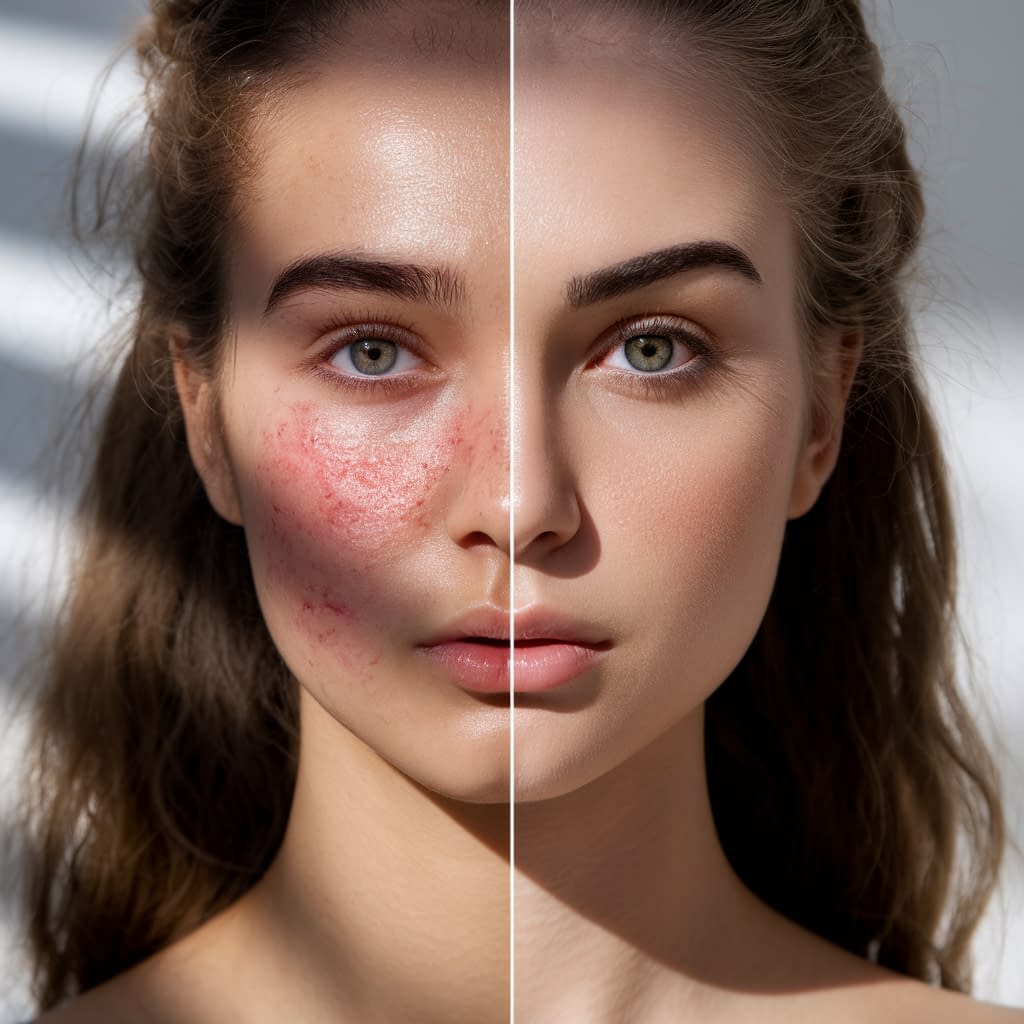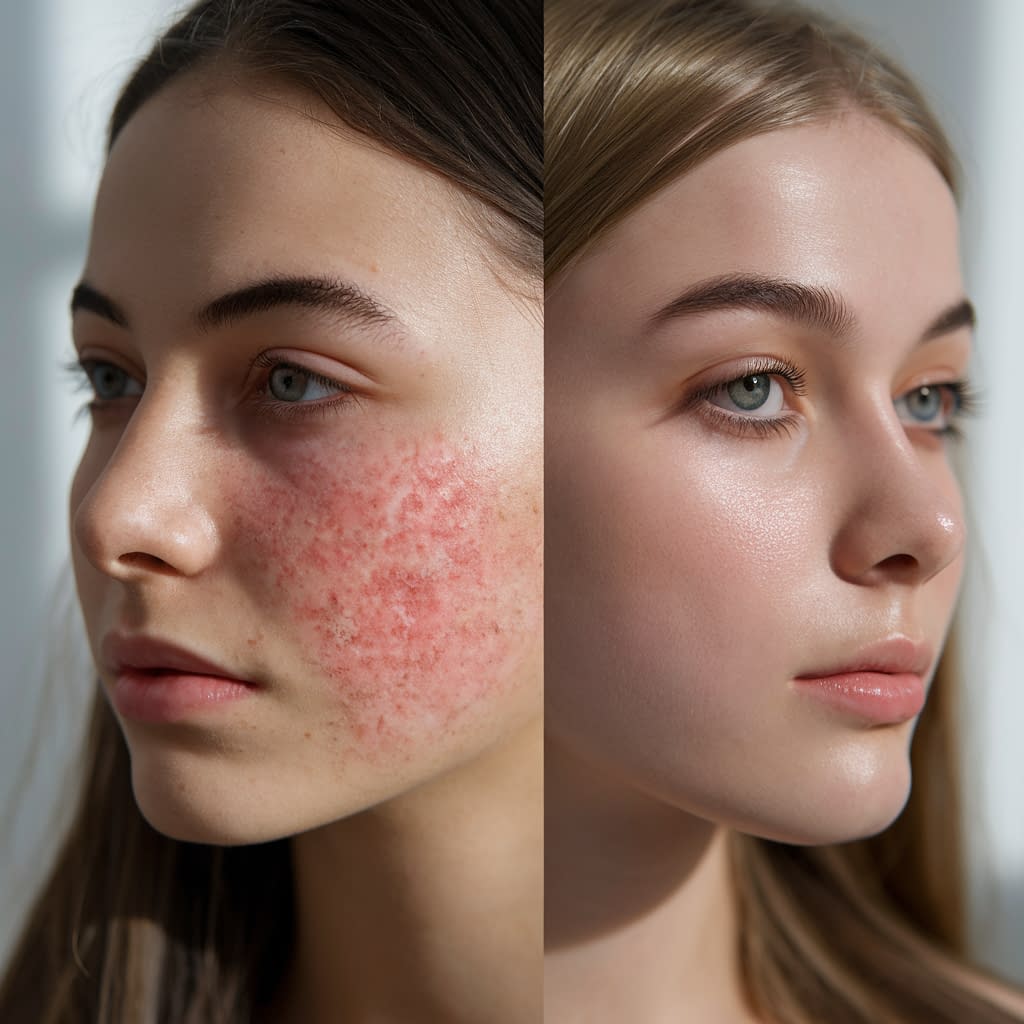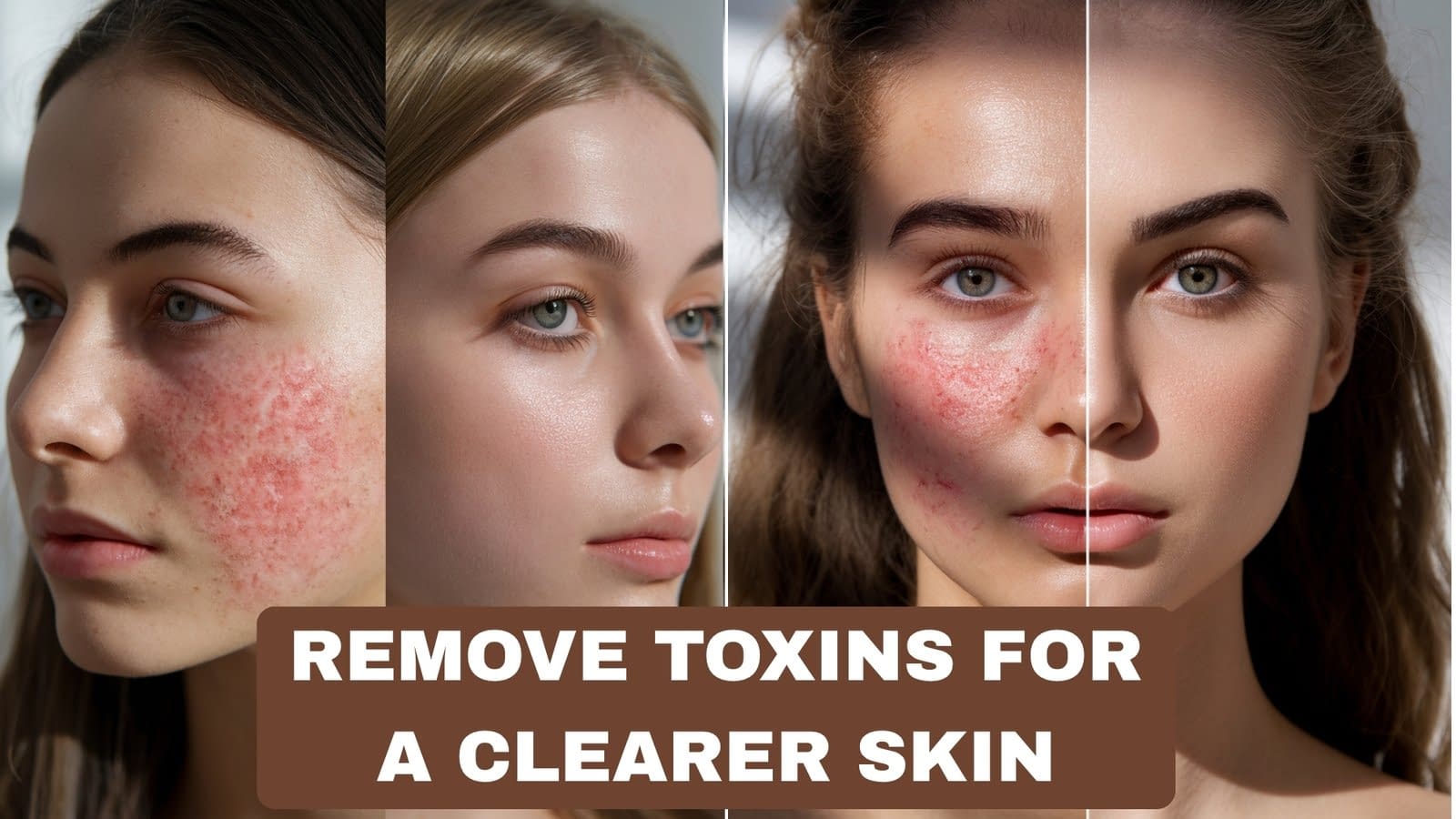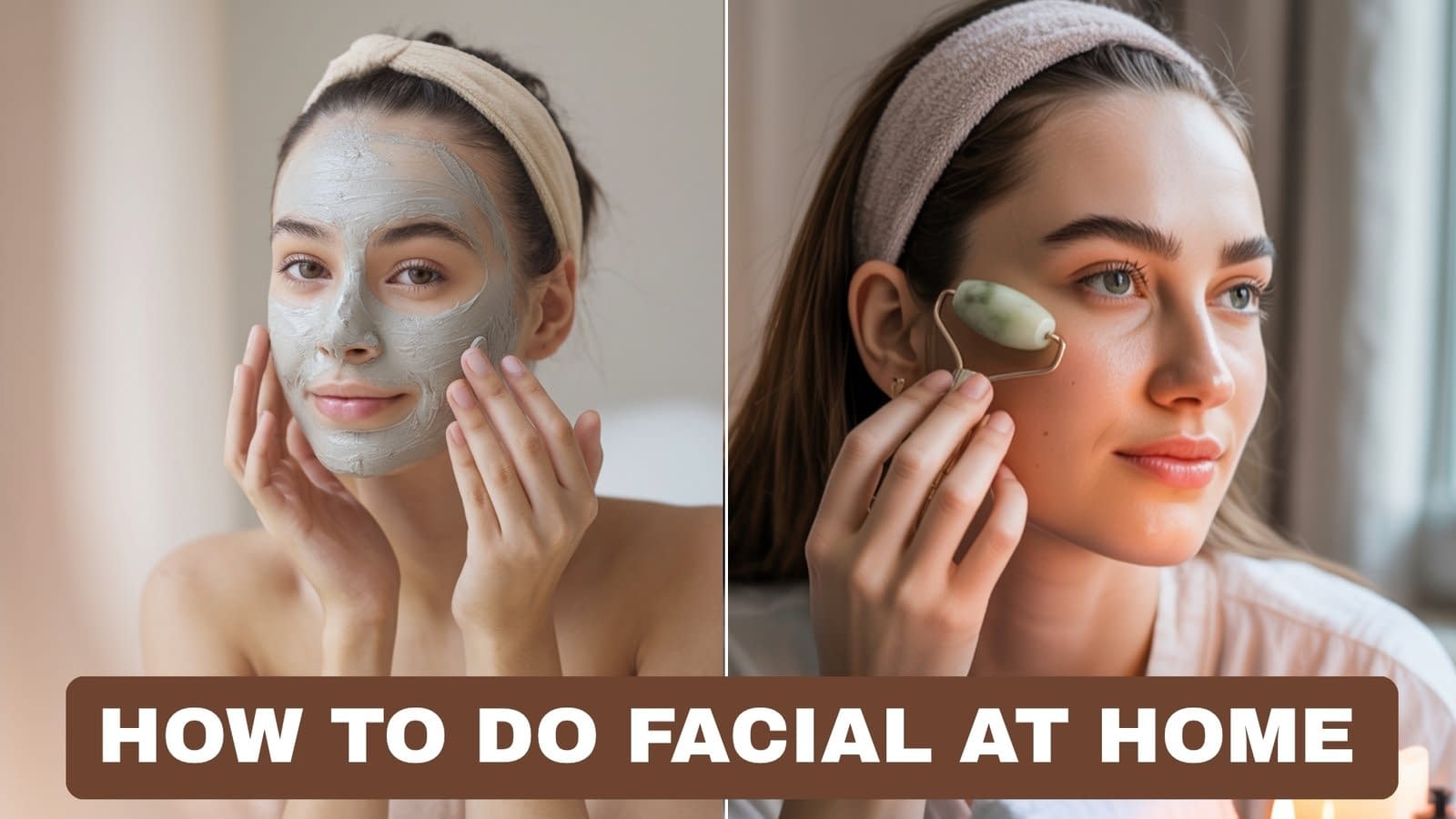Clear, healthy skin is rarely the result of a single miracle product — it’s the outcome of daily habits that help your body handle stress, process waste and keep inflammation low. This guide explains what people mean by “toxins,” how they can affect your skin, and — most important — practical, evidence-based steps you can use right now to support your body’s natural detox systems and improve your skin’s tone, texture and glow. Where useful I include step-by-step actions you can apply immediately and sources for deeper reading.
Quick note: “Detox” is a marketing-heavy word. Your liver, kidneys, lungs, gut and skin already process and remove many pollutants. The goal here is not radical or risky cleanses, but sustainable changes (food, water, sleep, skincare, environment) that reduce toxin exposure, improve elimination and lower inflammation — which together help skin look clearer. If you have a medical condition, see a clinician before starting supplements or aggressive cleanses.
What Are Toxins and How Do They Affect Your Skin?
Short definition: In health conversations “toxins” is a catch-all for substances that can harm cells or disrupt normal body function — heavy metals, air pollution (particulate matter), some industrial chemicals (PFAS), certain ingredients in personal-care products (parabens, phthalates), and the by-products of metabolism when clearance pathways are overwhelmed. Some toxins are environmental (what you breathe or touch); others can come from food, water or occupational exposure.Frontiers+1
How toxins accumulate and travel:
- Many harmful compounds enter the body through inhalation, ingestion or skin contact. Some are rapidly cleared; others (lipophilic pollutants, some heavy metals) accumulate in fatty tissue or organs over time. These can create low-grade, chronic stress on your detox organs (liver, kidneys) and immune system.Frontiers
- The skin itself participates in elimination and metabolism. When skin-mediated detox pathways are weakened or when systemic toxin load is high, oxidative stress and inflammation can increase — which shows up as breakouts, redness, dullness or slowed repair. (There’s research showing that decreased skin detoxification can contribute to oxidative stress and related metabolic effects.)PMC
Practical takeaway: Reducing exposure + supporting your body’s natural clearance systems is safer and more effective than “detox” fads. Start with environment and product swaps, then support internal clearance via nutrition, hydration and sleep.
Signs Your Skin Is Struggling with Toxins

Skin is an organ that often signals internal imbalance. These signs are not diagnostic (many things cause the same symptoms), but when they persist they suggest your body could benefit from lower exposure and more support:
- Frequent breakouts or cysts that don’t respond to usual care (can be linked to inflammation, hormonal imbalance, gut dysbiosis).
- Persistent dullness, rough texture or grey cast — reduced cell turnover and oxidative stress dull the complexion.
- Puffiness and under-eye bags — fluid balance and lymphatic drainage are affected by sleep, salt, alcohol and inflammation.
- Increased sensitivity, redness or eczema flare-ups — some environmental chemicals and personal-care irritants sensitize skin.PubMed+1
- Premature lines or uneven pigmentation — oxidative stress (from pollutants, UV and smoking) accelerates collagen breakdown and pigment irregularities.
Step-by-step mini check (5 minutes):
- Look in natural light and note 3 skin complaints (breakouts, tone, texture).
- Ask: did any start after a new job, move, skincare product, or dietary change? If yes, suspect exposure/change.
- If issues are sudden, severe, or worsening, consult a medical dermatologist — especially for rashes, blistering, or signs of systemic illness.
The Role of Diet in Detoxifying Your Skin
Food doesn’t literally “scrub toxins” out of your organs — but the right nutrients support the liver’s detox enzymes, feed your microbiome (which influences skin), and lower systemic inflammation.
What helps (eat more of):
- Colorful vegetables & fruits — rich in antioxidants (vitamin C, polyphenols) that neutralize free radicals and support skin repair. Aim for a rainbow each day.The Nutrition Source
- Fiber-rich whole grains, legumes & vegetables — fiber helps bind and eliminate waste through stool and supports a healthy gut microbiome.
- Good protein sources (fish, poultry, legumes) — amino acids are building blocks for glutathione, the body’s key antioxidant used in liver detox reactions.The Nutrition Source
- Omega-3 fats (fatty fish, walnuts, flax) — lower inflammatory signaling that often underlies acne and rosacea.
- Fermented foods (yogurt, kefir, kimchi in moderation) and probiotic foods/supplements — emerging evidence shows modifying gut flora can reduce acne and inflammation. (See research below.)PMC
What to reduce or avoid (eat less of):
- Highly processed foods, refined sugar and trans fats — these promote systemic inflammation and insulin spikes that can aggravate acne and oil production.The Nutrition Source
- Excess alcohol — impairs liver function and dehydrates skin.
- Large amounts of high-mercury fish (in some species) — avoid frequent consumption of swordfish, shark, king mackerel if concerned about heavy-metal exposure. (Check local advisories.)
Step-by-step 7-day eating plan to support skin detox (practical):
Day-to-day plan (repeatable):
- Breakfast: Overnight oats with berries, ground flaxseed and plain yogurt (probiotic).
- Snack: Apple + handful of nuts.
- Lunch: Big mixed salad (leafy greens, cruciferous veg like broccoli), quinoa or beans, olive oil + lemon dressing.
- Snack: Carrot sticks + hummus.
- Dinner: Grilled salmon or tofu, roasted vegetables, brown rice.
- Drinks: Water, green tea (moderation).
Small steps: swap sugary snacks for fruit; replace one processed meal with a vegetable-forward plate each day.
Why this works: These choices encourage antioxidant capacity, fiber-driven elimination, stable blood sugar, and a microbiome that supports skin health. For deeper reading on dietary patterns and overall health see Harvard’s Healthy Eating Plate.The Nutrition Source
Hydration: The Key to Naturally Clear Skin

Water is a simple, high-value intervention. Hydration supports kidney function (key for filtering water-soluble waste), helps circulation, and keeps the skin plump and elastic.
What the evidence and guidance say:
Health services recommend regular fluid intake because water helps maintain skin moisture and elasticity — dehydration makes skin look dull and accentuates fine lines. Drinking fluids throughout the day is better than gulping large amounts all at once.nhs.uk+1
Step-by-step hydration routine (easy):
- Start the day with a glass of water (250–350 ml).
- Carry a 1-litre bottle and sip regularly; aim for about 1.5–2.5 L/day depending on activity, climate and body size. (Adjust if you have a medical condition.)
- Include herbal teas (chamomile, peppermint) for variety — they count toward fluid goals and some have calming/anti-inflammatory properties (use caffeine mindfully).
- Eat hydrating foods daily: cucumber, watermelon, oranges, tomatoes and leafy greens.
- Avoid excess caffeine and alcohol — both dehydrate if consumed in large amounts.
Practical trick: Set reminders on your phone for small sips hourly — consistency beats binges.
Daily Skincare Habits That Support Detoxification
Your skin is both a target and a player: it’s exposed to pollutants and also has enzymes to neutralize some substances. Healthy habits reduce irritants and support repair.
Daily routine (step-by-step, morning + evening):
Morning
- Gentle cleanse to remove overnight oil and dust. Use a sulfate-free cleanser suited to your skin type.
- Antioxidant serum (vitamin C) — helps neutralize free radicals from pollution and UV exposure; use before moisturizer.
- Light moisturizer (hyaluronic acid for hydration if skin is dry).
- Sunscreen (SPF 30+) — UV accelerates oxidative damage; sunscreen is a frontline defense against environmental aging.
Evening
- Double-cleanse if wearing makeup or sunscreen: oil cleanser followed by a gentle water-based cleanser. This helps remove particulate pollutants that stick to skin.
- Exfoliate gently 1–2× per week (chemical exfoliants like low % AHA/BHA or a soft physical scrub) to speed cell turnover and unclog pores — don’t overdo it.
- Repair serum (niacinamide, retinol at night for permissible skin types) — these support barrier function and accelerated cell renewal (retinol should be introduced slowly).
- Moisturize to lock in hydration and aid barrier repair.
Products & ingredients to support “detox” functions:
- Antioxidants: vitamin C, vitamin E, niacinamide.
- Barrier builders: ceramides, glycerin, hyaluronic acid.
- Soothing agents: panthenol, allantoin, centella asiatica (for sensitive/inflamed skin).
Avoid harsh detergents and frequent over-exfoliation — they strip the barrier and can increase sensitivity to pollutants.
A note on personal-care toxins: Many modern products contain ingredients (parabens, phthalates, some preservatives, PFCs) that raise concern for long-term exposure; selecting cleaner, well-labelled products reduces risk of chronic low-grade exposure. Read ingredient lists and choose reputable brands.PubMed
Lifestyle Changes to Reduce Toxin Buildup
Daily life exposures add up: air pollution, poor sleep, stress hormones and lack of movement can impair detoxification or increase inflammatory load.
High-impact lifestyle changes (step-by-step plan):
Sleep
- Prioritize 7–8 hours per night — sleep is when repair and metabolic cleanup ramp up. Optimize by winding down 60 minutes before bed (no blue screens), cooling the room, and keeping a consistent schedule.
Stress management
2. Daily 10–20 minutes of breathing, meditation or slow walking lowers cortisol and inflammation. Chronic stress shifts immune and metabolic setpoints and can worsen acne and eczema.
Exercise & circulation
3. Aim for 150 minutes/week of moderate activity (brisk walking, cycling). Exercise boosts circulation, lymphatic flow, and sweat — all help move waste products and improve skin tone.
Reduce environmental exposures
4. Indoors: improve ventilation, use air purifiers if you live in high-pollution areas, wash hands/face after outdoor activities to remove particulate matter.
5. Switch to low-emission cookware (avoid overheating nonstick Teflon), filter tap water if local advisories suggest contaminants, and limit exposure to tobacco smoke.Frontiers
Practical weekly checklist:
- 3× workouts/week, 2× longer walks
- 7–8 hours nightly sleep (track for 1 week)
- Swap 1 processed meal/day for a vegetable-forward plate
- Clean one personal-care item (wash makeup brushes, replace mascara every 3 months)
Detoxifying Treatments and Natural Remedies for Glowing Skin

Some topical or at-home treatments can support skin appearance; think of these as support acts, not replacements for diet, hydration and sleep.
Evidence-friendly options & how to use them (step-by-step):
- Gentle clay masks (1× per week) — draw oil & impurities without stripping (kaolin for dry/normal, bentonite for oilier skin). Apply to clean skin 5–10 minutes, rinse with lukewarm water.
- Charcoal masks — can help remove surface debris but use sparingly to avoid drying.
- Exfoliating masks/peels (AHA/BHA) — use low concentrations and follow product instructions. Start once every 10–14 days; increase only if tolerated.
- Dry brushing (before shower) — gentle strokes toward the heart can stimulate circulation and lymph flow; use soft brush once or twice weekly and follow by shower & moisturizer. (Be gentle over inflamed or broken skin.)
- Epsom or magnesium baths with a few drops of calming essential oils (lavender) — may support relaxation and reduce muscle tension; avoid over-hot baths that dry skin.
- Professional options (periodic): facials with lymphatic massage, LED red-light therapy (for collagen stimulation), or a dermatologist-directed chemical peel/laser for specific pigment or scarring issues.
Safety note: If you have rosacea, eczema, very sensitive skin, or are pregnant, consult a dermatologist before chemical peels, essential oils or aggressive treatments.
Foods and Supplements That Aid Skin Detox
Food first — supplements can fill gaps but aren’t a substitute for a balanced pattern. Below are commonly used nutrients with some supportive evidence.
Foods:
- Cruciferous vegetables (broccoli, Brussels sprouts) — support liver phase II detox pathways via sulfur-containing compounds.
- Citrus & berries — vitamin C for collagen and antioxidant protection.
- Garlic & onions — contain sulfur compounds that support metabolic pathways.
- Fiber sources — whole grains, legumes and vegetables to bind and remove waste in stool.The Nutrition Source
Supplements (confirm with your clinician):
- Probiotics — evidence suggests probiotics can improve acne and inflammation in some people by modulating the gut-skin axis; choose studied strains and quality brands. (Systematic reviews show promise but variable results.)PMC+1
- Omega-3 fish oil — anti-inflammatory effects that may reduce clinical redness and some inflammatory acne.
- Vitamin C + E — antioxidant support for skin repair (topical vitamin C is especially effective).
- N-acetyl cysteine or glutathione precursors — support endogenous antioxidant glutathione (use under medical advice).
How to introduce supplements safely (step-by-step):
- Pick one evidence-backed supplement (e.g., probiotics with specific acne data).
- Research dose/strain (look for clinical trials or product transparency).
- Start for 8–12 weeks and track skin changes and any side effects.
- Stop if adverse effects occur and consult your clinician.
Myths About “Detoxing” Your Skin
There’s a lot of noise. Let’s separate helpful habits from hype.
Myth 1 — You need a special “detox tea” or cleanse to remove toxins.
- Reality: There’s no robust evidence that commercial “detox” teas or extreme cleanses remove toxins safely — and some have caused harm (liver injury or contain undeclared drugs). Health authorities advise caution and say the body already detoxifies itself.NCCIH+1
Myth 2 — Sweating in a sauna or exercising removes toxins directly from fat.
- Reality: Sweating eliminates some trace metals and small amounts of compounds, but most long-term clearance is renal and hepatic. Exercise and saunas are good for circulation, mood and metabolism — helpful — but don’t rely on them as a chemical cleanse.Frontiers
Myth 3 — More exfoliation or stronger cleansers mean faster detox.
- Reality: Over-exfoliating damages the skin barrier, making skin more reactive to pollutants and sensitizers. Gentle, consistent care beats aggressive routines.
Practical rule: If a product promises rapid whole-body toxin removal, luminous skin overnight, or dramatic weight loss without lifestyle change — be skeptical. Look for well-designed studies or official health guidance.
Creating a Sustainable Routine for Clear, Healthy Skin

Long-term results come from consistency, not extremes. Below is a realistic, sustainable routine that combines diet, lifestyle and skincare — follow it for 8–12 weeks and track improvements.
A weekly plan (step-by-step):
Daily (every day)
- Eat a vegetable-forward diet with lean protein, whole grains and healthy fats.The Nutrition Source
- Hydrate steadily (water + herbal teas).nhs.uk
- Simple AM skincare: gentle cleanser → antioxidant serum → moisturizer → SPF 30+.
- PM: double cleanse if wearing makeup → targeted nighttime serum (niacinamide or retinol if tolerated) → moisturizer.
- Sleep 7–8 hours and practice 10 minutes of relaxation (breathing, light stretch).
Weekly
- 2–3 exercise sessions (30–60 minutes total each).
- 1 gentle exfoliation or a mild chemical mask.
- 1 clay or hydrating mask depending on needs.
- Replace one processed item with a whole-food meal.
Monthly checks
- Review your product list: eliminate one product with questionable ingredients (fragrance, known irritants) every month. Consider switching to a fragrance-free or “clean” alternative for sensitive areas.PubMed
When to see a pro: persistent cystic acne, severe eczema, new rashes, or if a product provokes burning or swelling. A dermatologist can test for contact allergies, advise on prescription options, or check for systemic causes.
Conclusion
“Detoxing” for clearer skin isn’t about a single potion or a weekend fast. It’s about decreasing exposures (cleaner products, less pollution/contact), supporting your liver/gut/kidney through good nutrition and hydration, prioritizing sleep and movement, and using gentle, evidence-based skincare. Those combined changes lower inflammation, support natural elimination pathways and let your skin do what it’s designed to do: repair, renew and glow.
Five immediate, no-fail actions (do these today):
- Swap one processed snack for a serving of vegetables or fruit.The Nutrition Source
- Drink a full glass of water when you wake and carry a bottle today.nhs.uk
- Swap out one personal-care item with a simpler fragrance-free alternative (or patch-test new product).PubMed
- Sleep 30 minutes earlier tonight (set a simple wind-down routine).
- Add one serving of probiotic yogurt or fermented food this week (if you tolerate it) and consider discussing a probiotic supplement if you have acne.PMC








